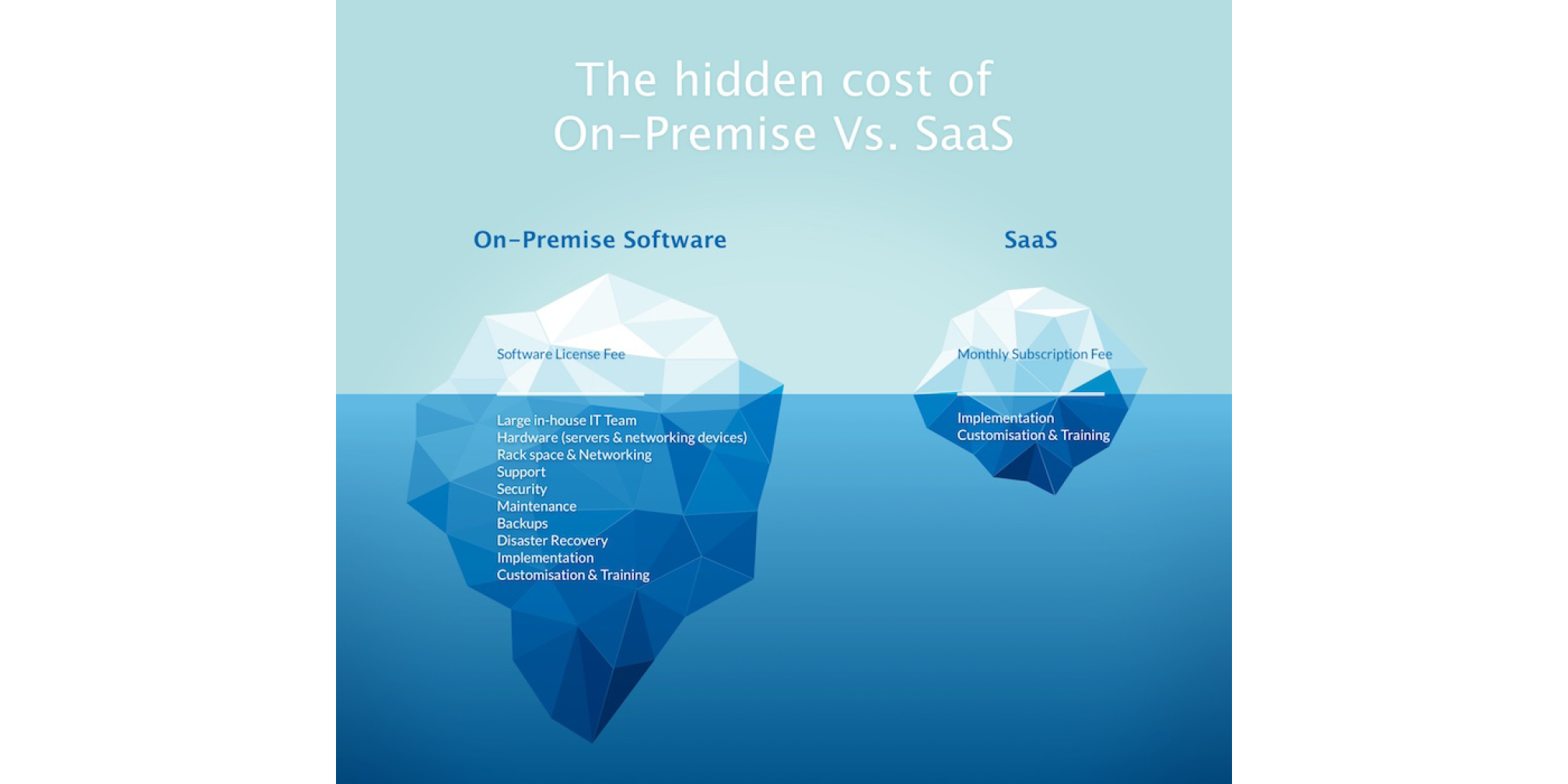SaaS: the tech-free guide

If you haven’t heard of SaaS, you’ll definitely have heard of its inseparable sibling, the cloud. These are technologies that are changing the way every business – including legal operations – works.
Let’s leave your business behind for a moment and think about your home computer. Do you have a Gmail account for your personal or family emails? Perhaps you use Evernote to manage notes and tasks. How about Dropbox, the file management tool (a company so popular that it has also just successfully IPO’d)?
All of these are ‘SaaS’ businesses – or ‘Software-as-a-Service’, and they represent an evolution in software which is not just changing the apps on our phones but is changing the way legal professionals work - and even the entire business model of legal technology.
To understand SaaS, let’s go back to the software you’ve used at home. If you grew up with traditional software (for example, installing Microsoft Office, or downloading games), you’ll know that Gmail, Evernote, Dropbox and the rest are all rather different.
In SaaS products, all the processing happens in the cloud – out on the internet. With Gmail, for example, you don’t have to download any software. Your emails, and the software to manage them, are all located on Google’s computers. SaaS products are accessible using a browser, with little or no downloading of software or installation – and one of the benefits is that you can pick up your emails, files, documents and to-dos on pretty much any device. Popping out for a meeting? You can log in to your emails when you leave the office as easily as if you were at your desk, with the confidence that everything will be fully synced.
That’s obviously very convenient. But when we apply this delivery model to software used in the workplace, it’s game-changing.
The new economics
Historically, a business would have to buy their own servers (computers) to host their own private instance of a software tool. It would need to be configured for your individual company’s needs, which attracted a consultancy cost, along with lots of smart people from the software vendor to get things working. An IT team would be required to keep everything running smoothly, and with the ever-increasing threat of cyber-attacks, a 24/7 support contract would also need to be purchased.
Indeed, the Total Cost of Ownership (TCO) of an on-premise solution also demands exactly that: premises. This can include a fully-featured and secured data center, and office space for those IT staff, consultants and a management team. And all this is before the annualised license cost of the software for your users.
Besides cost, on-premise software often has a lengthy onboarding period. Plenty of traditional software systems represented a seven-figure capital investment and a 12-month IT consultancy engagement before a single user could become more productive.
There was additional inertia. Nobody wants to sign off a seven-figure purchase order without getting great value; so companies would look to give other departments some benefit from the investment. Suddenly, it’s an 18-month procurement and setup process, which is fraught with risk and needs to be project managed – by which time competitors could take the initiative.
Worse still, you can’t run much of a trial on an all-or-nothing deployment: most of the infrastructure has to be in place before anyone can test the service, so it’s impossible for a business to prove the value of its potential investment by dipping a toe in the water.
Commercial risk makes the economics of traditional enterprise software, frankly, horrible.
With SaaS, however, there is no software to install. There’s no infrastructure required to support it, no complex installation, no need for new servers, computers or laptops; and no IT or security team needed to keep the lights on.
A single user can try out a corporate SaaS service in anything from eight weeks to eight minutes.
Because no in-house infrastructure is required, (remember, all the processing happens in the cloud), there’s no upfront capital investment in technology needed. And that means that SaaS companies can fully convert their offer into an OpEx billing model: when you buy Dropbox or Salesforce or Microsoft Office 365, all you will pay is a simple, predictable monthly fee.

Indeed, where big-bang traditional technology usually meant committing to a 2-8 year cycle of IT investment, most SaaS services allow you to simply switch on and off or scale up and down as you need, month by month. If you take on new staff, add a seat. Cutting back? No problem – your technology expenditure can cut back too.
Flexible SaaS pricing models allow businesses to model and plan for software as a simple operational cost that typically grows in line with usage or consumption, rather than a large capital cost that needs to be amortised – aligned perfectly with the natural flow of the business. It’s an intuitively justifiable business case.
Because the costs are usually an order of magnitude less, the purchase process shorter and the risk massively reduced, an individual, department, function, project or team can deploy a SaaS service on a whim, to experiment and see if it works for them. If it does, great - you can put the technology to work! If not, the loss is negligible.
It is this deeper economic analysis, understanding the true Total Cost of Ownership (TCO) for on premise software, that makes the case for SaaS solutions so compelling.
Constant protection, constant updates
Technology whose agility matches business need in this way is an attractive proposition. It’s even more attractive for the in house legal function, which is perceived as a cost centre and therefore has to demonstrate a clear return on every investment. The ability to conduct a series of inexpensive experiments to trial various SaaS solutions provides a neat alternative to having to prepare a lengthy business case.
However, legal professionals have been slow to adopt cloud services – after all, it requires putting your trust in a third party.
These fears are unfounded. The major cloud infrastructure companies look after thousands of online services, and are – literally - hundreds of times better resourced to fight the 24/7 battle against threats and hackers than any in-house IT team. Microsoft’s Azure platform and Amazon’s AWS (the platform on which our own service, Apperio, runs) offer multiple levels of development and operational security measures. Both will secure your data and services, and seamlessly keep it duplicated and available on at least three data centers, often spanning multiple countries, which is far beyond the capabilities and budgets of most in house IT teams.
And even if your IT team is clinging to in-house solutions, you have almost certainly used cloud services at work already. If you’ve attended a video conference with Skype, WebEx, GoToMeeting or Zoom, you’re already a fully paid-up member of the cloud community!
Furthermore, when software, that connects to the Internet is run from on premise servers, keeping it secured is much, much harder. Traditional software typically has an annual or biennial release schedule (not least because every customer has to allocate a member of the IT team to install new copies or patches on every computer – a full-time job in itself). With a constantly evolving threat landscape, large week or month long windows of vulnerability increase the risk of being hacked exponentially. In contrast, when software is in the cloud, it can be updated in minutes; to ensure that any vulnerabilities are rapidly removed.
This applies not only to security (a cost) but also to new functionality (a benefit). SaaS companies use techniques like continuous deployment to release new tools and functions to their users as soon as they are developed. Feedback from users can be fed into the product roadmap and new iterations deployed within weeks instead of years (this is why the Uber, Facebook and LinkedIn apps on your phone are updated up to every couple of weeks or so). Problems are solved, new functions are added and the experience is built around the real needs of users in a much tighter and faster feedback cycle.
A better experience from a simpler business model
There’s no reason for legal professionals to understand the underlying technologies. But you can see here that there are two fundamental threads at work.
On the one hand, the user experience is better, which leads to happier and more productive users. That, in turn, translates to competitive advantage – and may even influence the attractiveness of a business to new employees (a quick look on employee review sites like Glassdoor will soon show you that outdated tech is a big issue for younger recruits).
On the other, SaaS provides businesses with the commercial safety to experiment and learn which software provides most value, without having to place high-risk investment bets. The pay-as-you-go business model means technology is available flexibly, yet with costs that are predictable, justifiable and often 10+ times cheaper than bespoke solutions. Trials are easy to deploy and phased rollouts will yield a much more rapid ROI.
Even the lawyer’s go-to software – Microsoft Office – is moving into the cloud as part of Microsoft’s ‘Evergreen IT’ strategy. Microsoft no longer wants people wasting time installing this year’s version of Word, Excel and the rest, and they don’t want to waste their own time maintaining numerous legacy versions. They want all their users running the latest version. So the new Microsoft Office suite will be bought as a subscription and new features will be delivered incrementally via automatic updates downloaded over the Internet. This is essentially the equivalent of a SaaS delivery model for desktop software. A recent survey by Barracuda found that 63% of businesses had already moved to Office 365 with half of the remainder planning to make the transition in the next 12 months.
Some IT departments are still hesitant, but users want their business software to have the functionality, connectedness and seamless usage that they’ve come to expect from their tablets and phones. And legal operations professionals and GCs are no different. SaaS is delivering that experience – and remarkable business benefits too